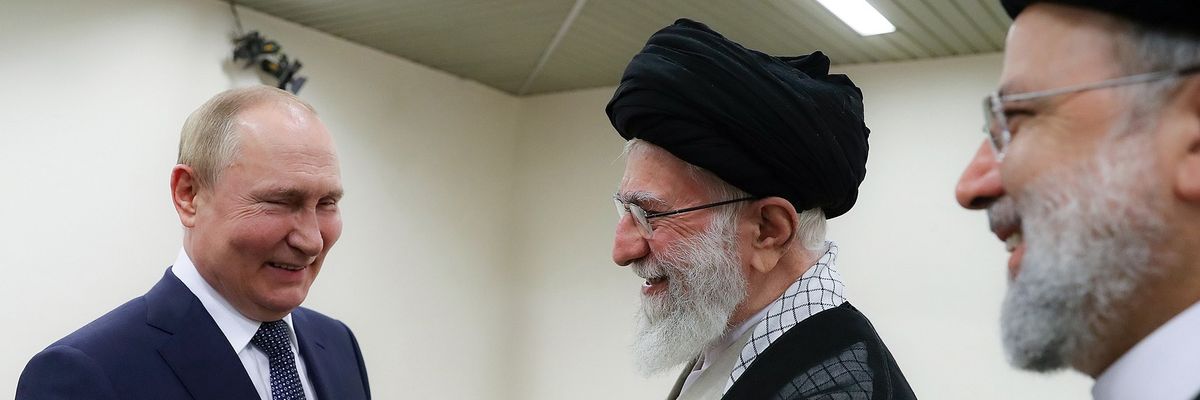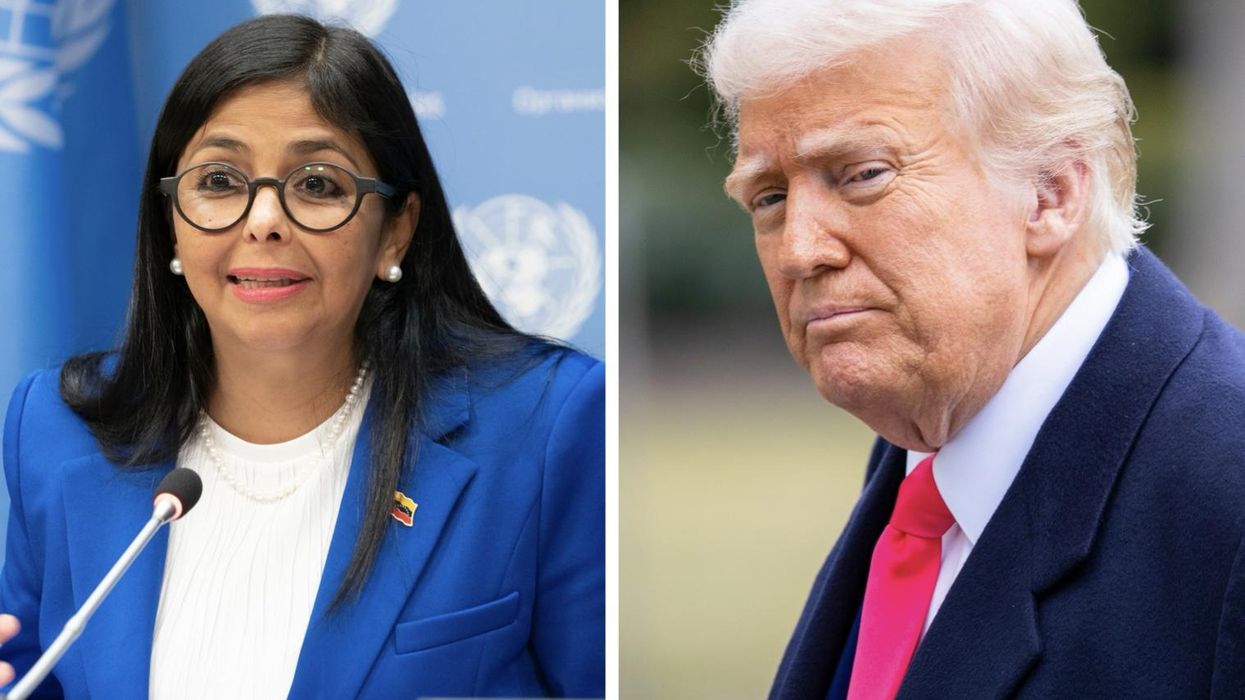Russia’s invasion of Ukraine has entered its second year. A critical element of this campaign has been Iran’s military support for Russia by providing Moscow with indigenously produced drones. Notwithstanding the media frenzy over Iran’s support, the bilateral military cooperation between the two countries is in fact nothing new.
Indeed, this relationship has developed through four distinct stages.
The origins of Russo-Persian military cooperation traces back to the 1870s when the Qajar king, Naser al-Din Shah, impressed by the Cossack brigade of the Russian Army, asked Tsar Alexander II to assist Iran by sending Russian military advisers, which led to the creation of the Persian Cossack brigade. Iran’s reliance on Russian military assistance grew deeper when Mohammad Ali Shah, in the aftermath of the bombardment of Iran’s parliament, and the country’s ensuing civil war, asked Russia to deploy troops to Iran to fight alongside the monarchists, turning the Russo-Persian military cooperation into a patron-client relationship.
During the Cold War, the former Soviet Union became Iran’s main rival, and Iran allied itself with the western camp. During this period, Iranian leadership saw the Soviets and their client states (i.e. Iraq) as the primary threat to Iran’s territorial integrity.
Nevertheless, Iran purchased limited amounts of standard military equipment from the Soviet Union, including armored vehicles and field artillery. In fact, according to a 1972 U.S. intelligence document, the Soviet Union between 1967 and 1971 extended $370 million in military aid to Iran, becoming its third most important supplier of weapons..
The 1979 Islamic Revolution and the subsequent hostage crisis deprived Iran of its primary arms supplier, the United States, and the bloody conflict with Iraq (1980-1988) had left the Iranian military in shambles. During the 1990s, Iran procured some major weapons systems from Russia including fighter aircrafts, air defense systems, and tanks.
Iran also purchased a variety of Russian air defense systems, including the short range TOR-M1, and the advanced S-300 long-range air defense system to protect its nuclear facilities. However, Russia under U.S. pressure, refused to deliver the latter systems until 2016.
Emerging Military Interdependence?
The conflict in Ukraine, however, has fundamentally changed the relationship between the two countries. Indeed, while prior to this conflict the relationship was that of a patron-client, Iran’s supply of drones to Russia has shifted the balance in favor of Iran.
While in the past, Iran, heavily sanctioned by major arms suppliers, had no option but to plead to Russia for major weapons systems, the increasingly isolated Russia is now relying on Iran for its less sophisticated, yet effective drones. Reports indicate that Iran has not only smuggled the drones to Russia on ships and state-owned airlines, but is also planning to build a factory in Russia that could manufacture drones for Moscow’s campaign in Ukraine — a new reality that seemed unthinkable only a decade ago.
Iranian drones are less sophisticated than their Russian- or American-made counterparts, and are slower and noisier. However, their lower price tag and ease of production make them an ideal choice for Russia, which, now heavily sanctioned, has difficulty accessing western produced chips needed for more advanced weapon systems. This allows the Iranian drones to be launched in massive numbers to saturate Ukraine’s air defense systems and hit soft targets such as power stations and other infrastructure.
Western reports indicate that while the Ukrainian military has shot down between 60 and 70 percent of the drones, some of them have been able to reach their targets inside Ukrainian territory. Indeed, this is similar to Iran’s own ballistic missile strategy, based on the assumption that a large number of missiles can saturate potential air defense systems.
In an indication of Iran’s growing technological importance to Russia, Moscow is now reportedly sending captured U.S. weapons, including the anti-tank Javelin and MANPAD Stinger missiles, to Iran for reverse engineering. This can provide Iran and Russia with access to high-tech U.S. and NATO military equipment.
It bears noting that Iran has proved its effectiveness in reverse engineering advanced weapon systems in the past. For example, the Iranian-made Toophan (Storm) anti-tank guided missile was reverse engineered from the U.S.-made BGM-71 TOW missile. Iran was also able to clone high-tech American drones, including the Scan Eagle and the Lockheed Martin RQ-170 “Sentinel,” and has since provided the former to Russia.
Meanwhile, Russia is reportedly set to reciprocate Iran’s support by opening up its more advanced arsenal to Iran, which has long been interested in procuring advanced weapons systems, particularly fighter aircraft. Iran has for decades been cut off from the western arms market, and its air force is both qualitatively and quantitatively inferior to those of its neighbors, especially Saudi Arabia.
While it was previously reported that Iran is interested in acquiring SU-30s, it seems that Iran has now opted for 24 Sukhoi-35 aircraft. If the deal goes through, these aircraft will be the most advanced fighters that Iran has procured in decades. Given the large fleet of its neighbors’ air forces, these planes will not change the balance of power in the region significantly — although it will certainly boost Iran’s defensive capabilities.
Moreover, while one Iranian official dismissed Tehran’s interest in procuring the S-400 air-defense systems earlier this month, some reports have indicated that Iran still seeks to acquire them. Acquisition of that system would indeed be a major boost to the country’s air defense capabilities, particularly in light of increased training by Israel’s air force for an attack on Iran’s nuclear facilities.
The war in Ukraine — and Iran’s emergence as an important supplier of weaponry to Russia — has indeed changed the dynamics of cooperation between Moscow and Tehran. In fact, unlike in the past, where Iran was the co-dependent partner and Russia maintained the upper hand, Russia today relies on Iran’s defense industry, which, thanks to decades of being subject to arms embargoes, has made remarkable progress.
This emerging partnership is due to the increasing isolation of both countries under U.S.-led sanctions and the exigencies of their own defense needs. Indeed, as the authors have previously noted, the U.S. seems to be inadvertently facilitating the consolidation of a political, economic, and military bloc among countries that are wary of Washington’s global financial, technological, and military dominance.
At this juncture, the reciprocal partnership between Moscow and Tehran involves the latter’s supply of inexpensive, yet relatively successful weaponry for the Kremlin’s war efforts, while Russia appears poised to fulfill Iran’s need for advanced high-tech weapon systems. Hence, it can be argued that military ties between the two countries have transformed from a lopsided patron-client relationship to interdependent cooperation.
The continued cooperation has the potential to create a supply chain and manufacturing system in which each country focuses its production on military equipment in which it has a comparative advantage. This “cross-functional partnership” stands in contrast to NATO’s “same-functional alliance,” where parties share similar competencies.
However, the durability of Iran’s role as a semi-equal partner depends on the volume of its exports to Russia. Indeed, if any other state, notably China, decides to provide Russia with military assistance, the nature of Russia-Iran military cooperation could be set back to where it was historically.
















